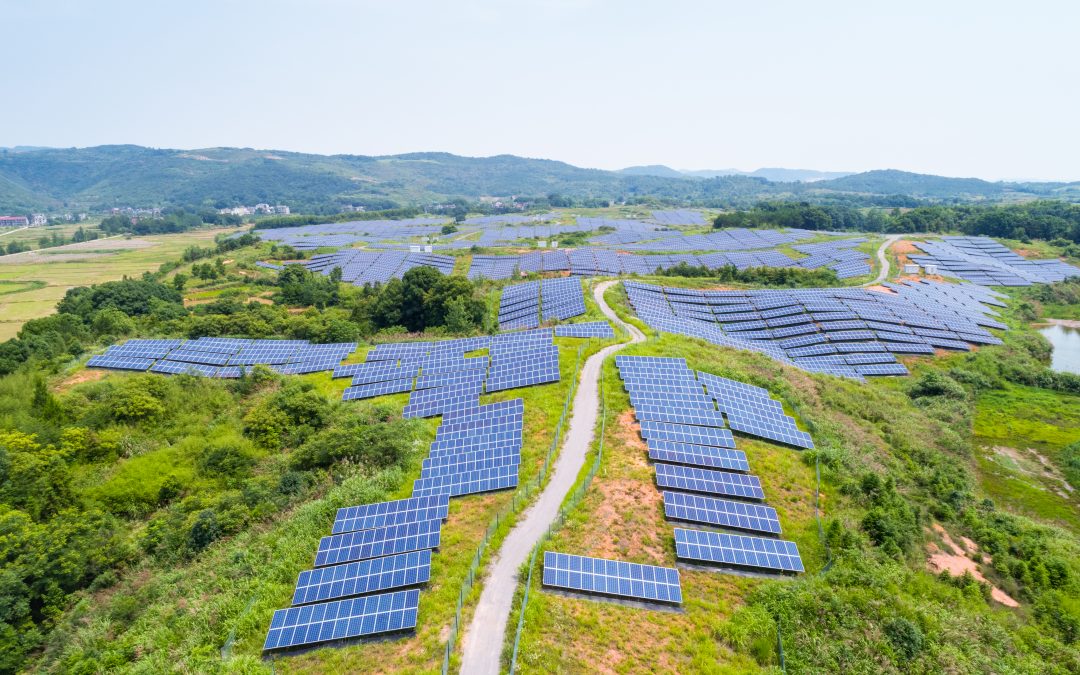As the global population continues to grow, the demand for both food and energy is skyrocketing. Traditionally, the expansion of energy infrastructure and agricultural land use has led to competition for space, often to the detriment of natural ecosystems. However, a relatively new concept known as “agrovoltaics” offers a promising solution to this challenge by combining solar energy production with agricultural activities on the same plot of land. This innovative approach not only maximizes land use but also brings multiple benefits to farmers, the environment, and the energy sector.
What is Agrovoltaics?
Agrovoltaics, also known as agrivoltaics, refers to the simultaneous use of land for both agriculture and solar energy production. This is typically achieved by installing solar panels above crops or grazing land. The solar panels are elevated and spaced in such a way that they allow sunlight to reach the plants beneath them, while also capturing solar energy for electricity generation.
The concept was first introduced in the early 1980s, but it has gained significant traction in recent years as the need for sustainable energy solutions has become more pressing. Agrovoltaic systems can vary in design, depending on the type of crops grown, the local climate, and the specific goals of the project. For instance, some systems use fixed-tilt panels, while others employ tracking systems that follow the sun’s movement throughout the day, optimizing energy capture while minimizing shade on the crops below.
Benefits of Agrovoltaics
- Increased Land-Use Efficiency: One of the most significant advantages of agrovoltaics is the efficient use of land. By integrating solar panels with agricultural activities, farmers can generate renewable energy without sacrificing crop production. This is particularly valuable in regions where arable land is limited or expensive.
- Improved Crop Yield and Quality: Surprisingly, the partial shading provided by solar panels can actually benefit certain crops, especially in hot and arid regions. The panels reduce the intensity of sunlight and lower temperatures, which can decrease water evaporation and protect crops from heat stress. Studies have shown that crops like lettuce, spinach, and peppers can thrive under these conditions, sometimes even producing higher yields than in open fields.
- Water Conservation: The shade from solar panels also helps in reducing water usage in agriculture. In areas prone to drought, agrovoltaics can play a crucial role in conserving water by lowering soil temperature and reducing evaporation rates. This dual benefit supports sustainable farming practices in water-scarce regions.
- Additional Revenue Streams for Farmers: Farmers who adopt agrovoltaic systems can benefit from an additional source of income by selling the electricity generated by the solar panels. This can provide financial stability and resilience against fluctuations in crop prices or poor harvests due to extreme weather events.
- Reduction in Greenhouse Gas Emissions: By combining solar energy production with agriculture, agrovoltaics contributes to the reduction of greenhouse gas emissions. This dual-use system supports the transition to renewable energy, reducing reliance on fossil fuels and lowering the carbon footprint of both energy production and agricultural activities.
Real-World Applications and Success Stories
Agrovoltaics is no longer just a concept; it is being implemented in various parts of the world with encouraging results. In Japan, for example, the government has promoted agrovoltaics as part of its renewable energy strategy. Farmers have successfully integrated solar panels with a variety of crops, including tea, rice, and mushrooms. Similarly, in France, the Sun’Agri project has demonstrated that solar panels can enhance grape production by reducing heat stress on vineyards.
In the United States, research institutions like the University of Arizona and the National Renewable Energy Laboratory (NREL) are studying the effects of agrovoltaic systems on crop yield and energy production. Their findings indicate that these systems can be a win-win for both agriculture and energy, especially in regions with high solar radiation.
Challenges and Future Prospects
Despite its many benefits, agrovoltaics is not without challenges. The initial investment costs can be high, and there may be technical challenges related to the design and maintenance of the systems. Additionally, farmers may need to adapt to new agricultural practices to optimize the benefits of agrovoltaics.
However, as technology advances and more case studies demonstrate the viability of this approach, it is likely that agrovoltaics will become more widespread. Governments and policymakers can play a crucial role in supporting this transition by providing incentives, funding research, and promoting awareness of the benefits of dual-use land systems.
Agrovoltaics represents a forward-thinking solution to some of the most pressing challenges facing our world today. By merging the production of food and clean energy, this innovative approach offers a path toward more sustainable land use, improved agricultural productivity, and a reduction in greenhouse gas emissions. As the world seeks to address the twin crises of climate change and food security, agrovoltaics could play a key role in shaping a more sustainable and resilient future.
While there may be logistical issues in making the change to solar, we can solve them all for you, easily and economically. Contact Us at Renewable Energy and we’ll show this can be done to your advantage.


Recent Comments